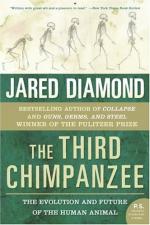
|
| Name: _________________________ | Period: ___________________ |
This quiz consists of 5 multiple choice and 5 short answer questions through Chapter 7, Why Do We Grow Old and Die?.
Multiple Choice Questions
1. What does Chapter 2 present?
(a) A brief overview of human evolution.
(b) A brief overview of chimpanzee evolution.
(c) A detailed description of the first Homo.
(d) A detailed description of Pan.
2. This view on sexual strategies is completely consistent with what?
(a) The standard accepted theory of evolution by means of natural selection.
(b) The standard accepted view of only a few cultures.
(c) The standard view of most cultures.
(d) The standard accepted theory of evolution by means of sexual selection.
3. How do scientists know that about four millions of years ago the first proto-human hominids began to walk upright?
(a) From analyzing skeletal limb changes discovered in the fossil record.
(b) The skeletons of chimpanzees have been found from the same time period.
(c) Footprints have been left by these proto-human hominids.
(d) The food eaten by the proto-human hominids is different than previous species.
4. H. erectus was not the first upright hominid but bears the appellation. Why?
(a) Because it is the tallest of all hominids.
(b) Because it was the first upright hominid discovered.
(c) Because it is the easiest to identify of all hominids.
(d) Because it was the most upright of all the hominids.
5. Why are studies of sexual attractiveness in humans difficult to do?
(a) Humans are difficult to trust.
(b) Humans often lie.
(c) Humans do not want to take place in studies.
(d) Human studies must rely on subjective interviews or careful examination of secondary effects.
Short Answer Questions
1. What does this say about secretive extra-marital sexual unions?
2. The author then considers the nearly uniquely human feature of female estrus?
3. What does the author propose regarding race?
4. Where is there a disparity regarding adulterous relationships?
5. Why were many of these scientific studies about extra-marital sexual unions never published?
|
This section contains 429 words (approx. 2 pages at 300 words per page) |

|




